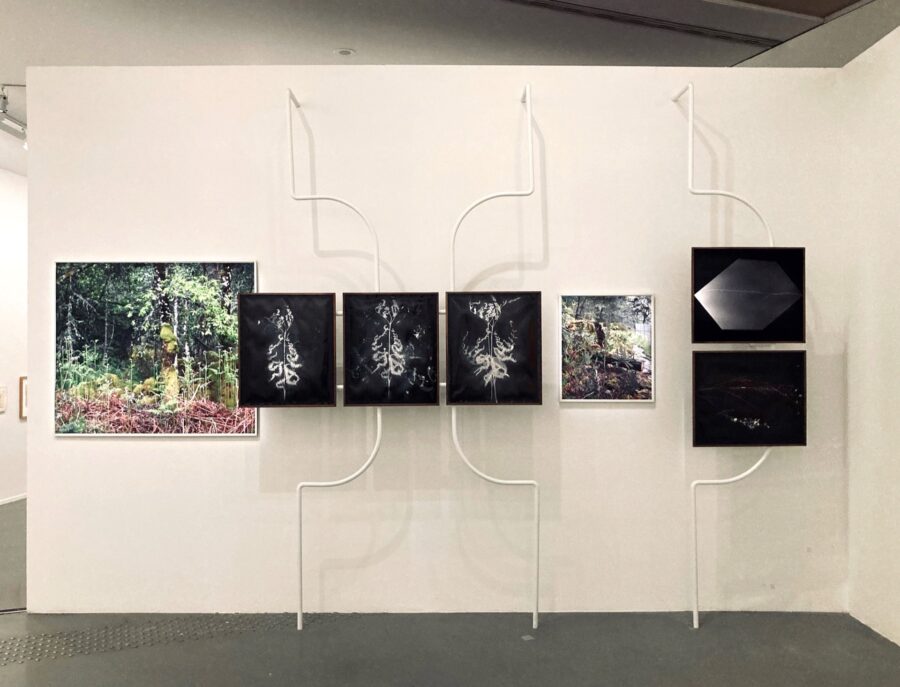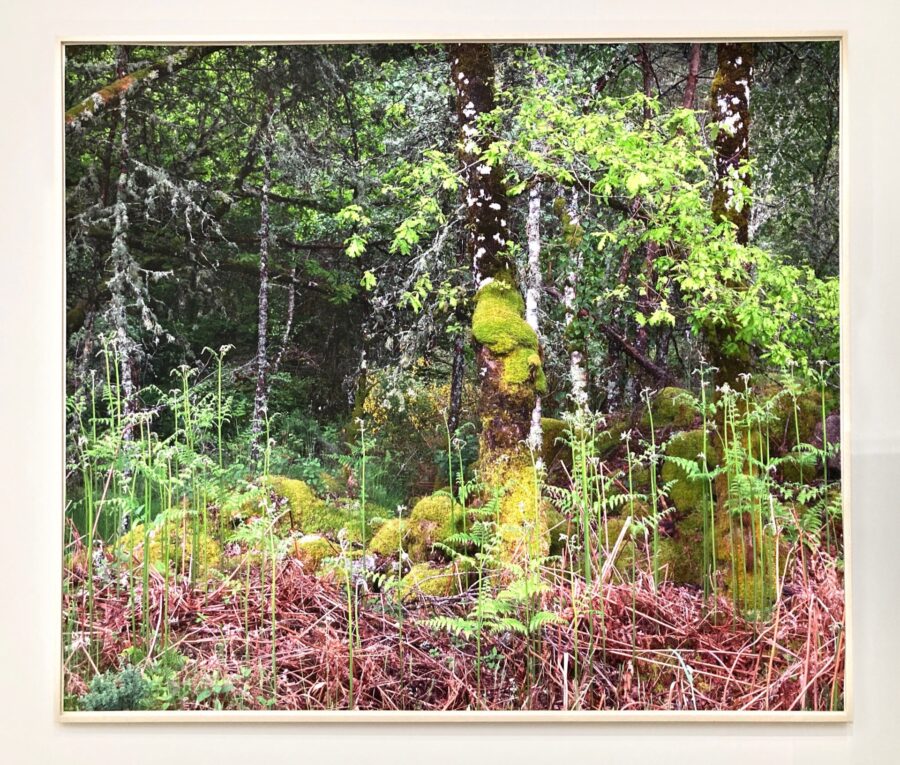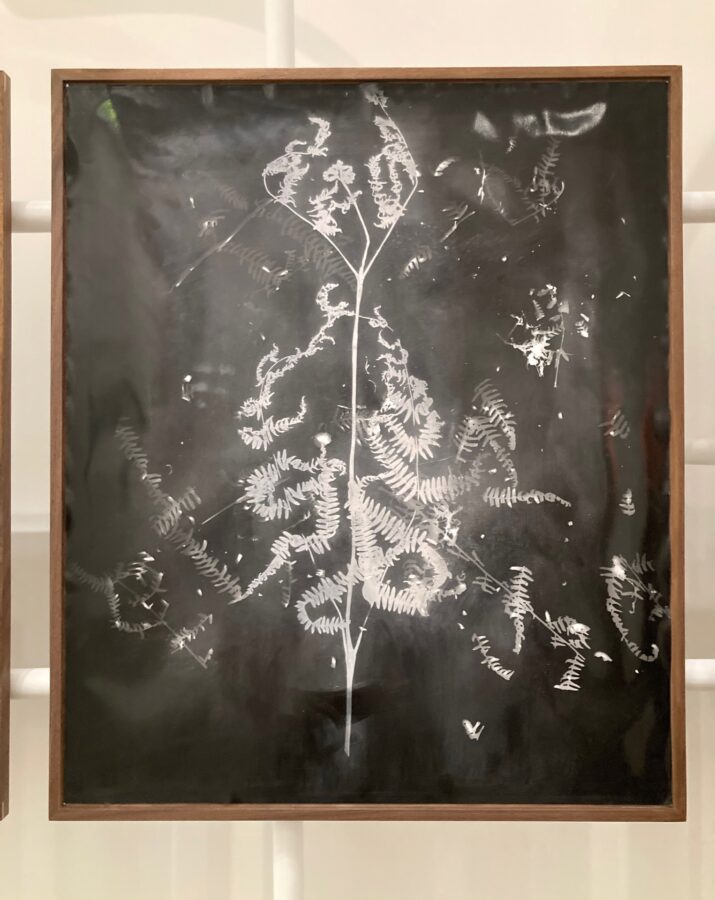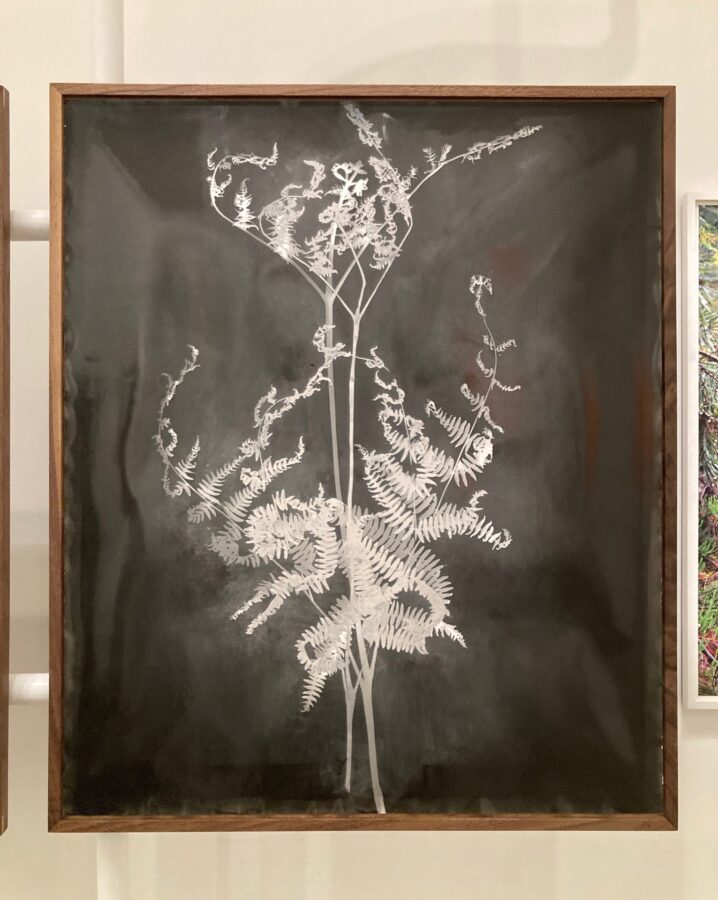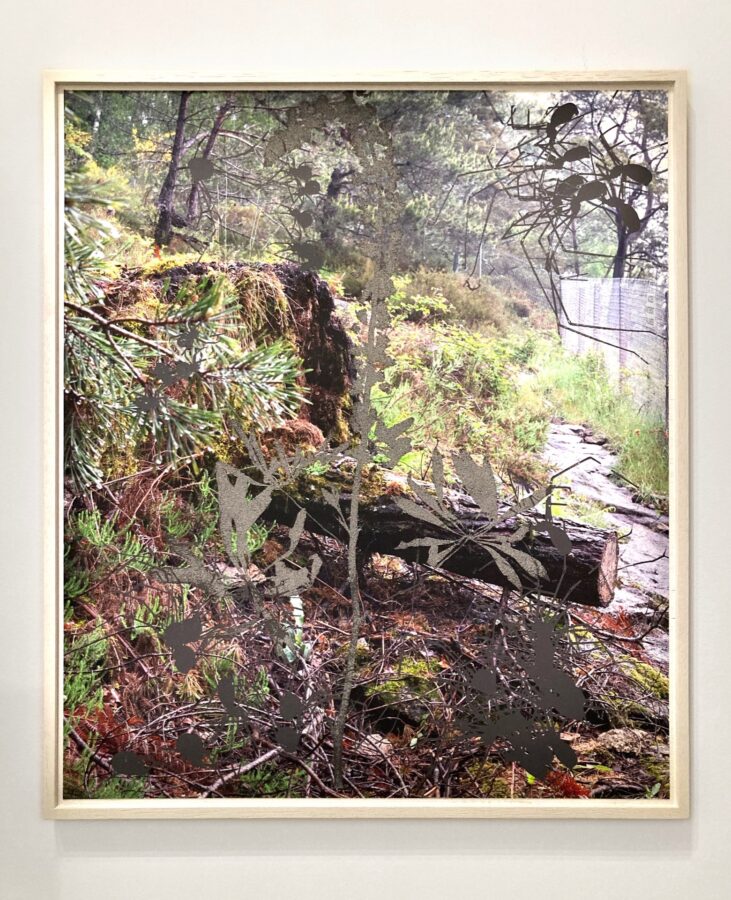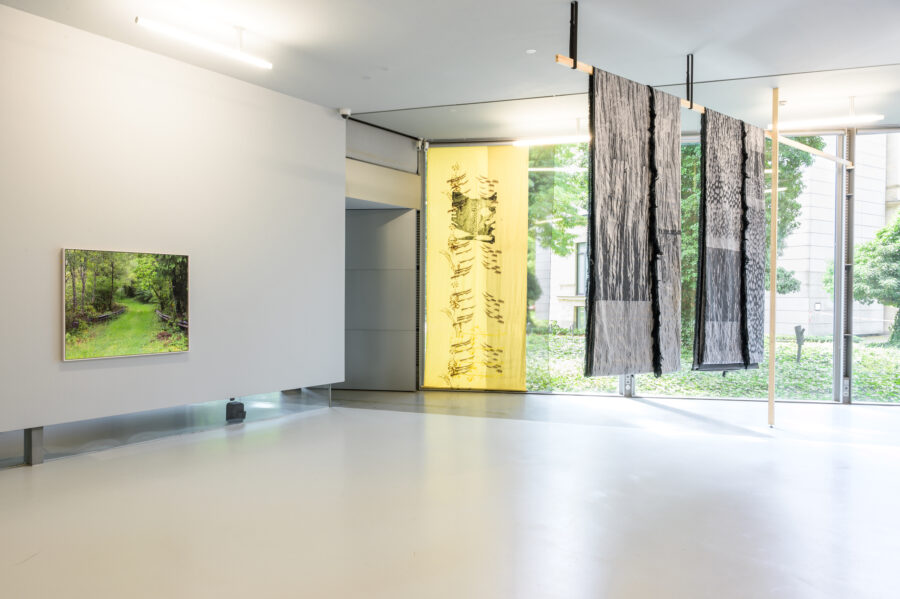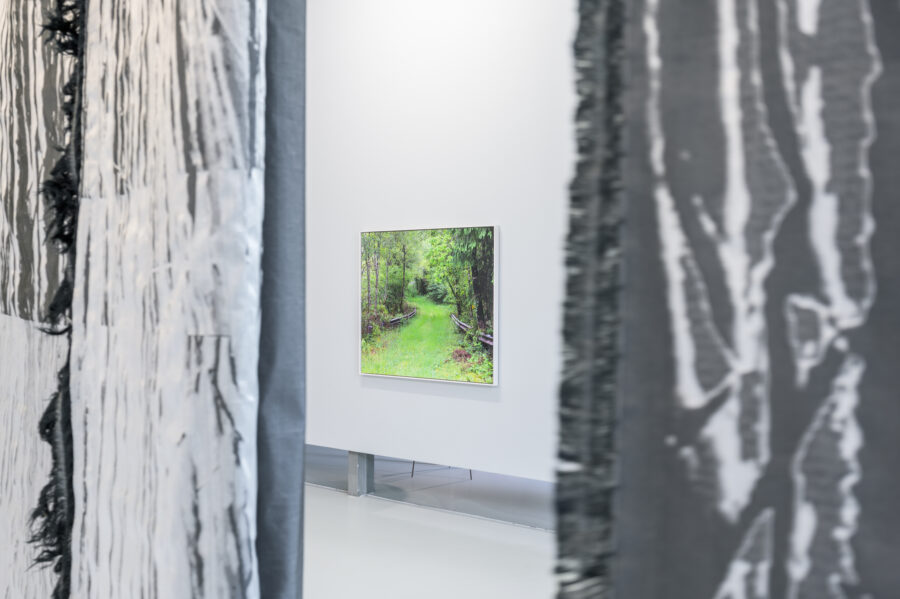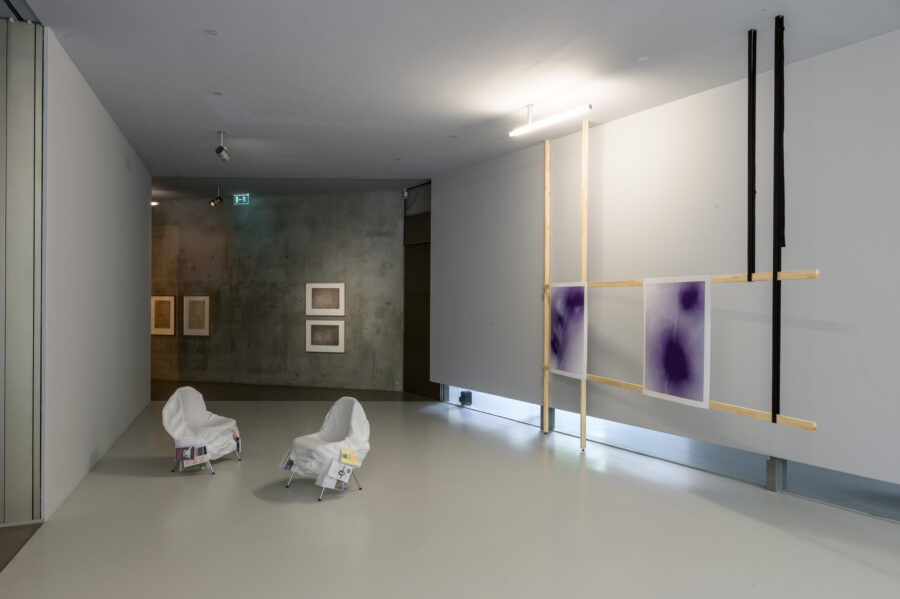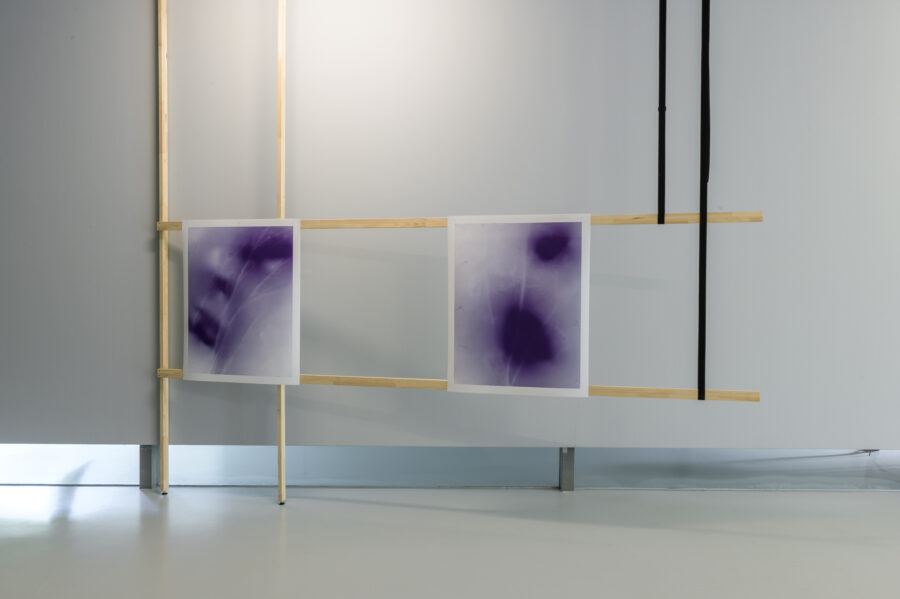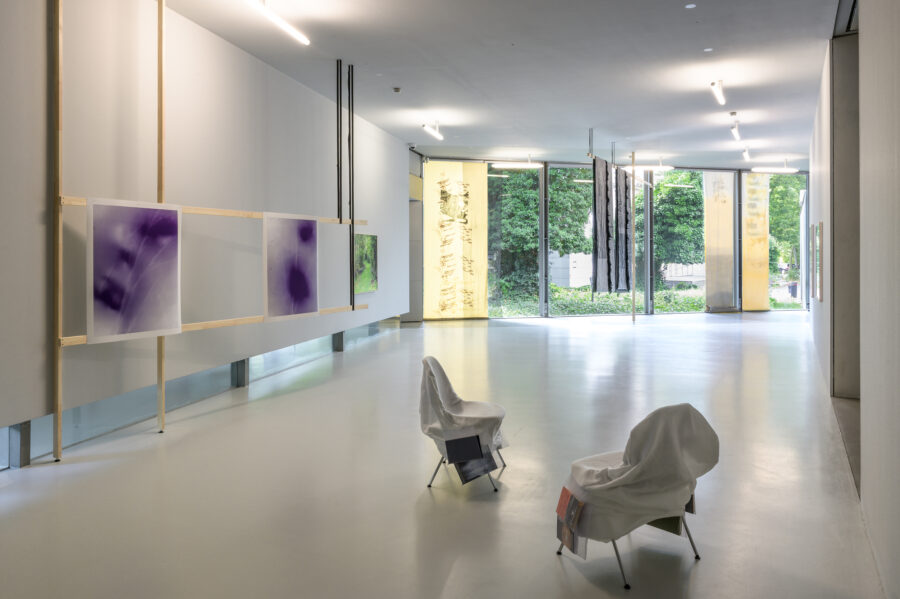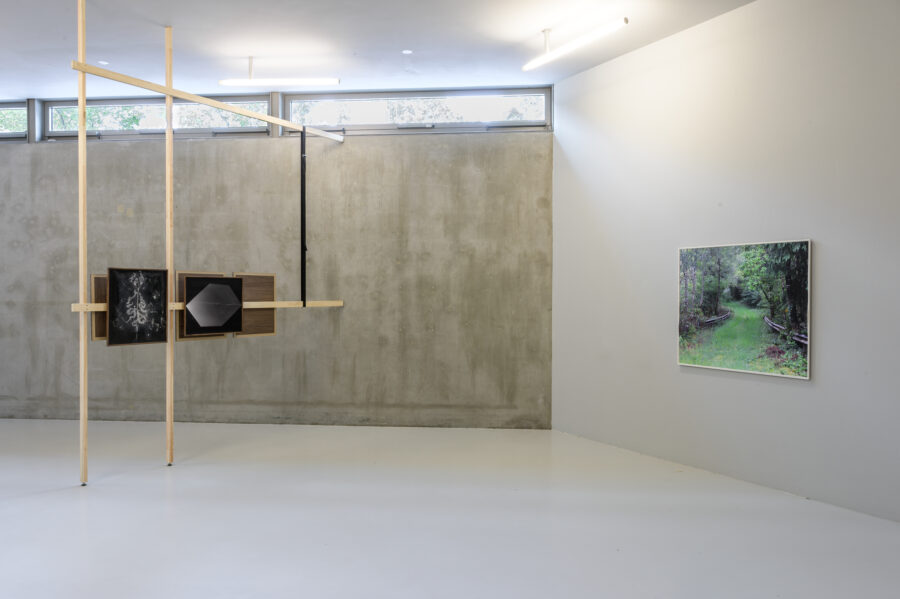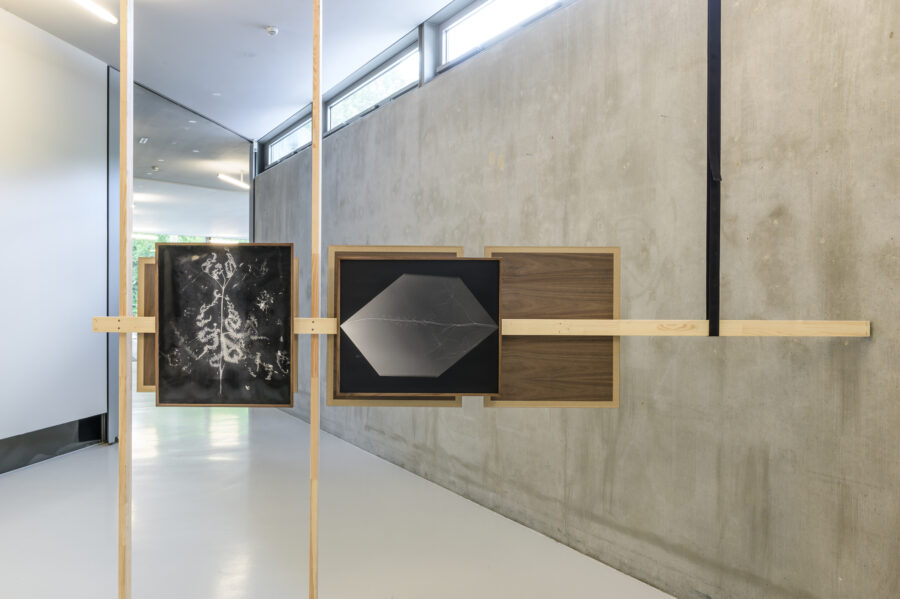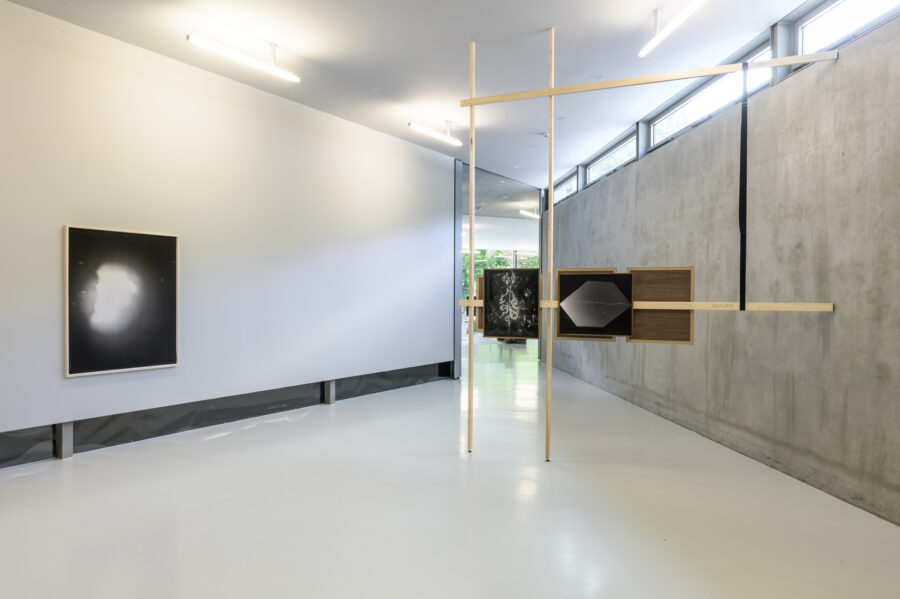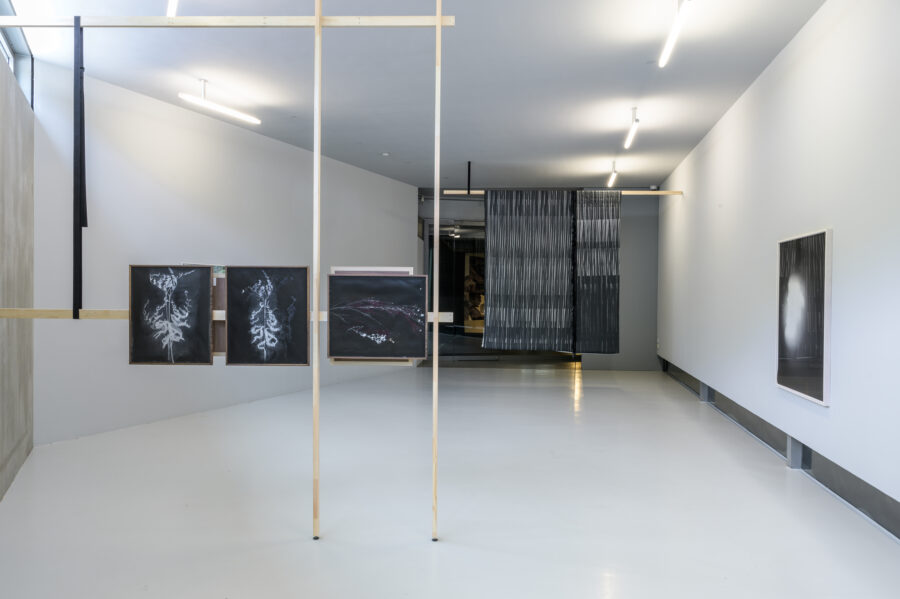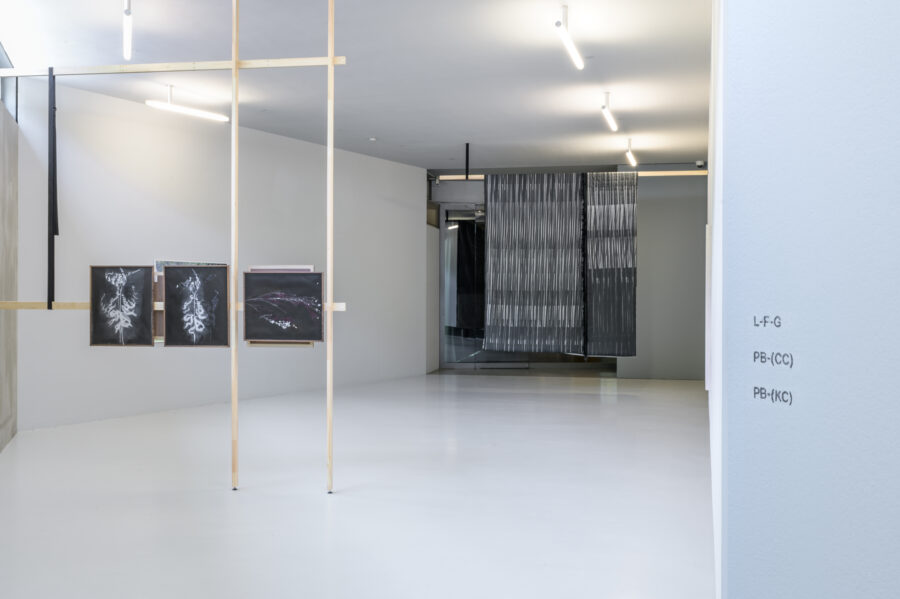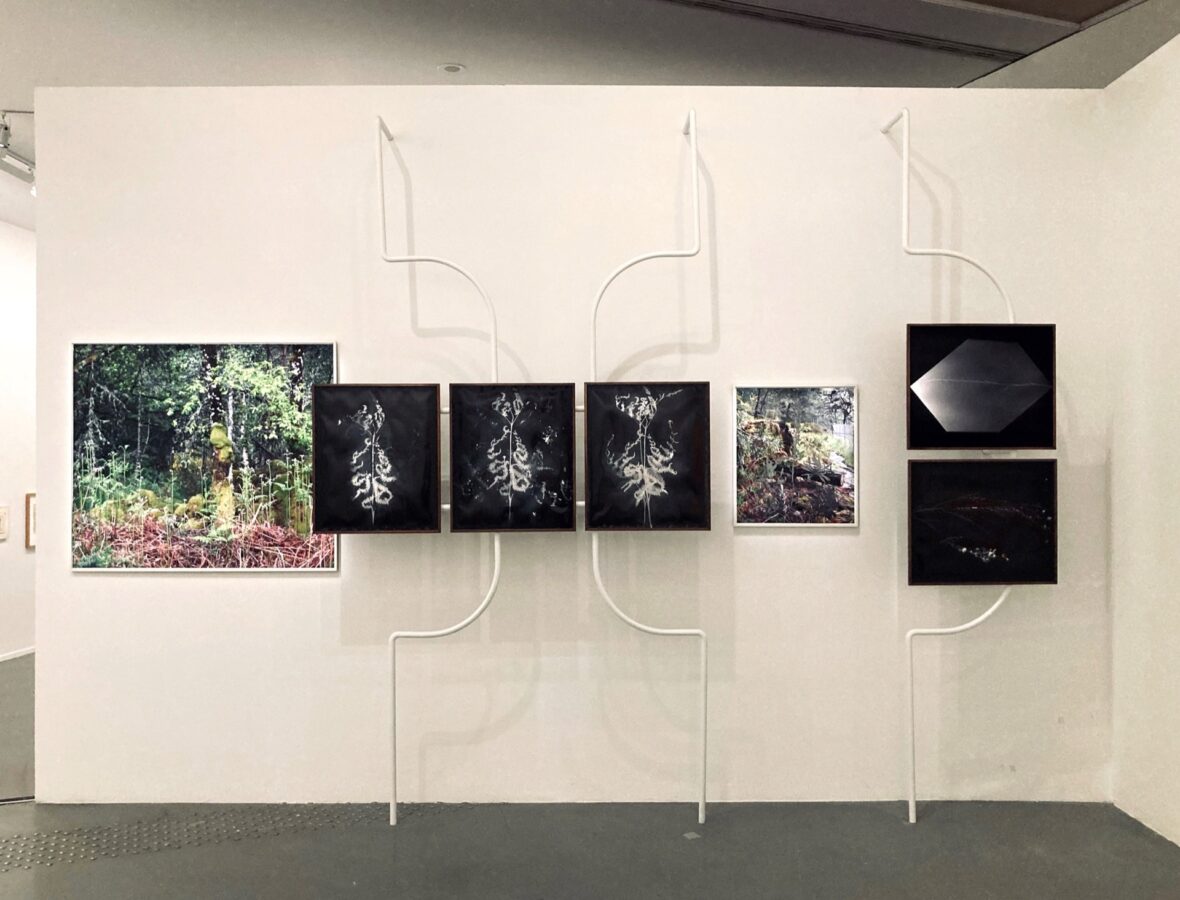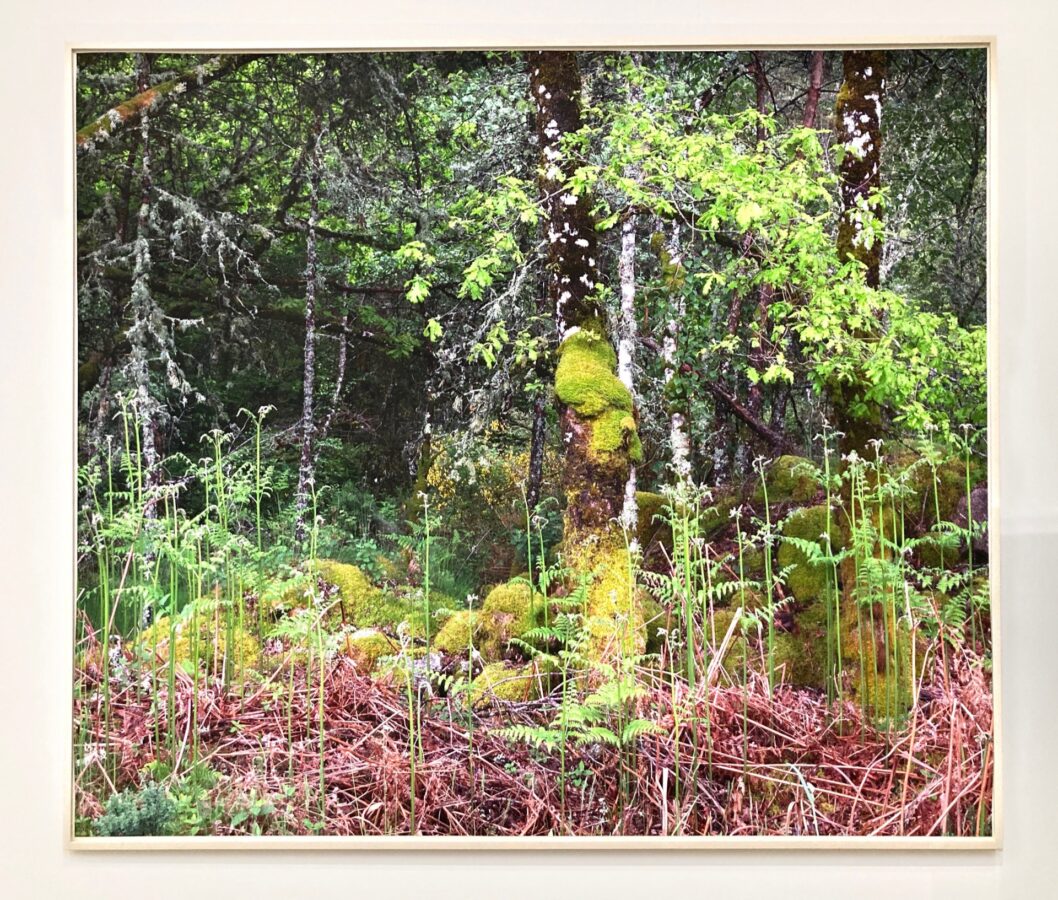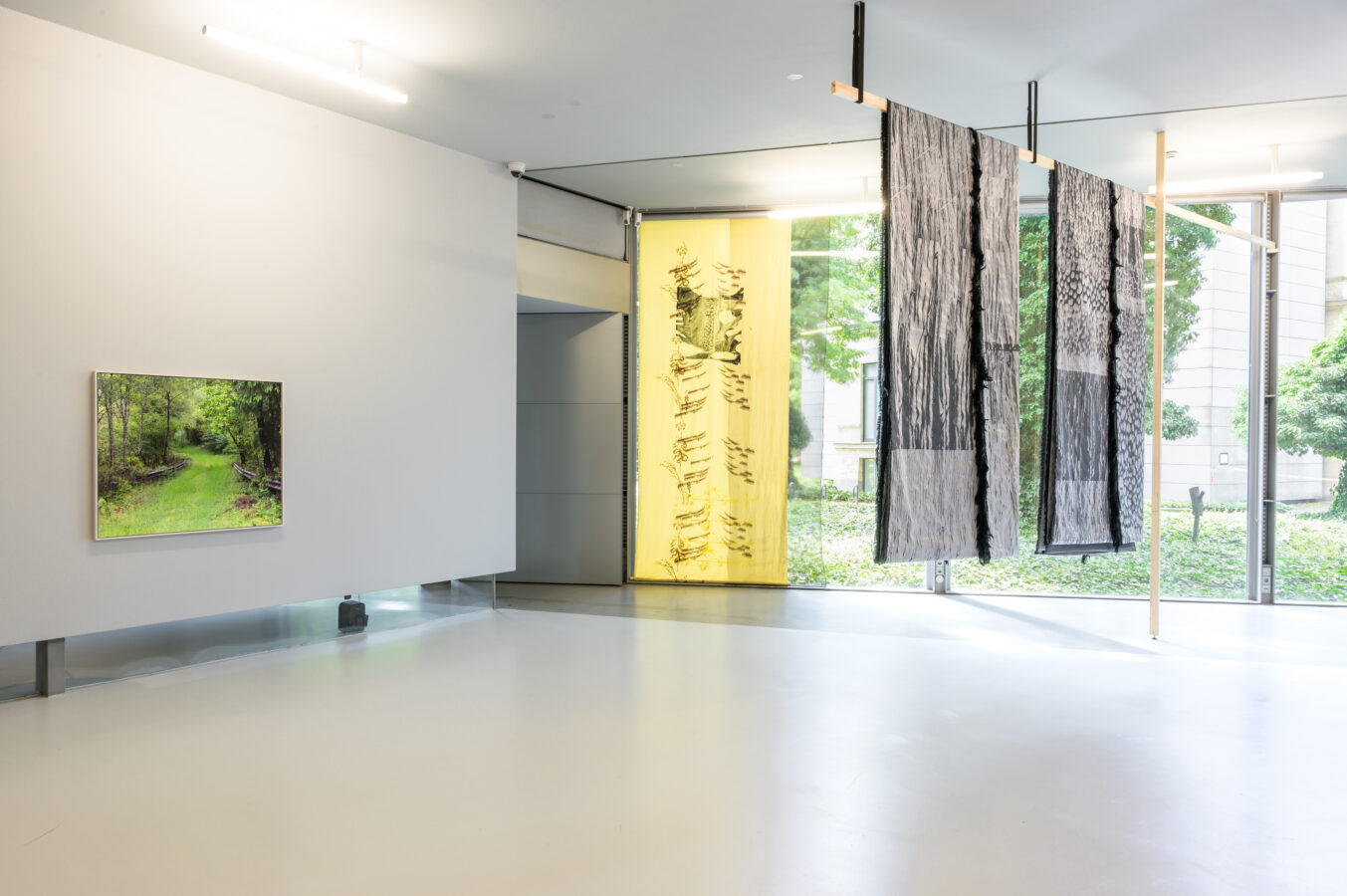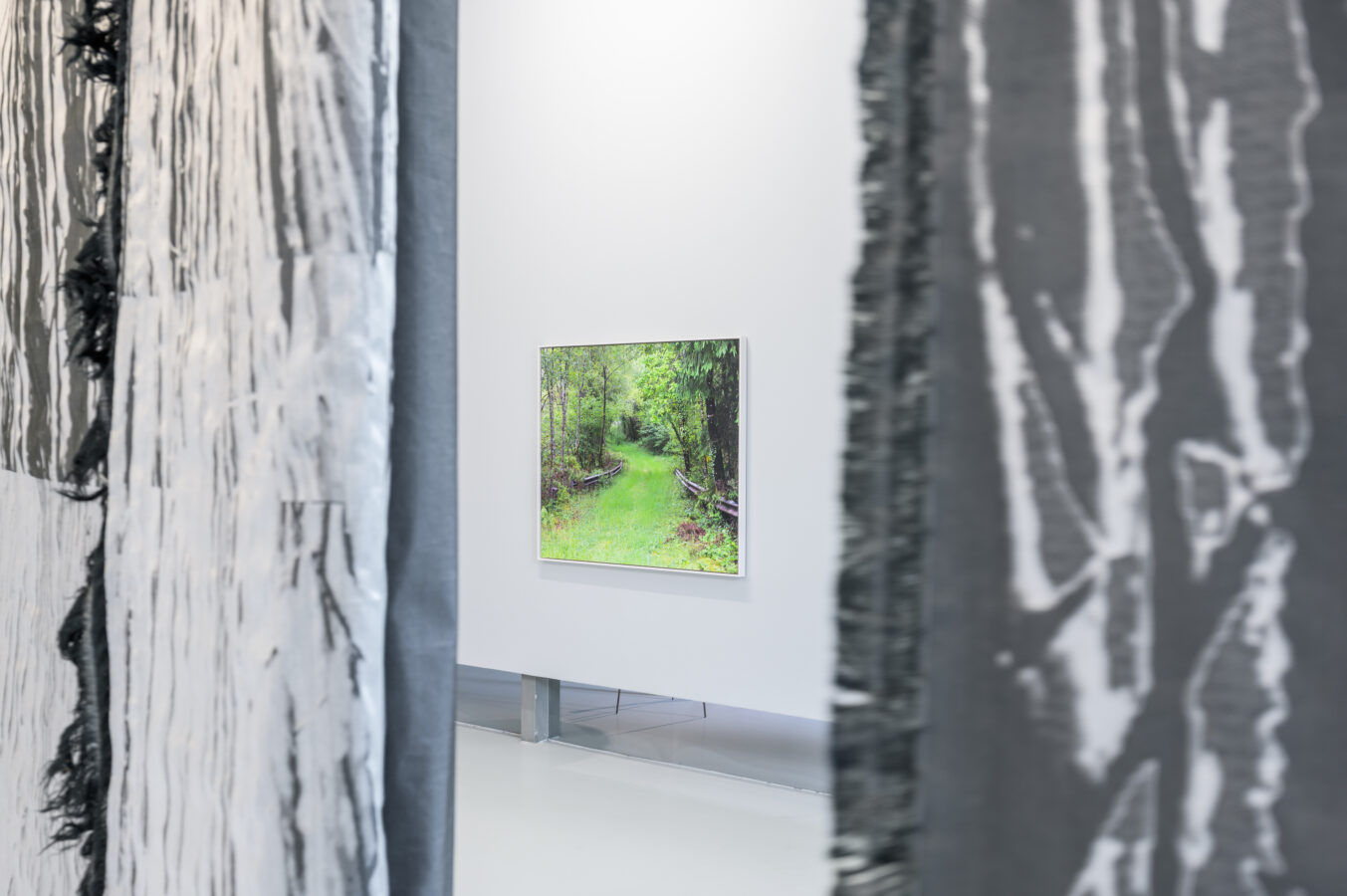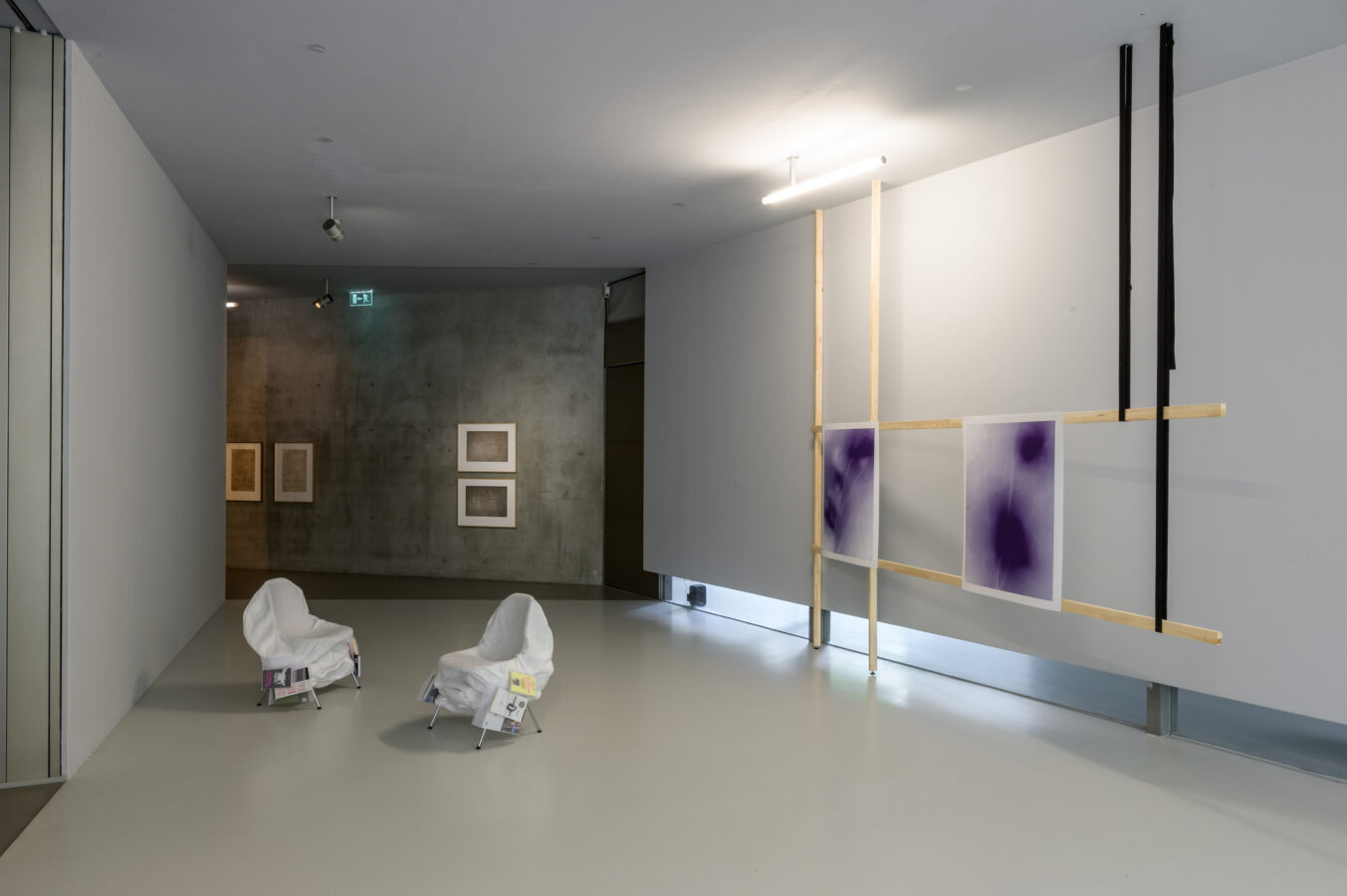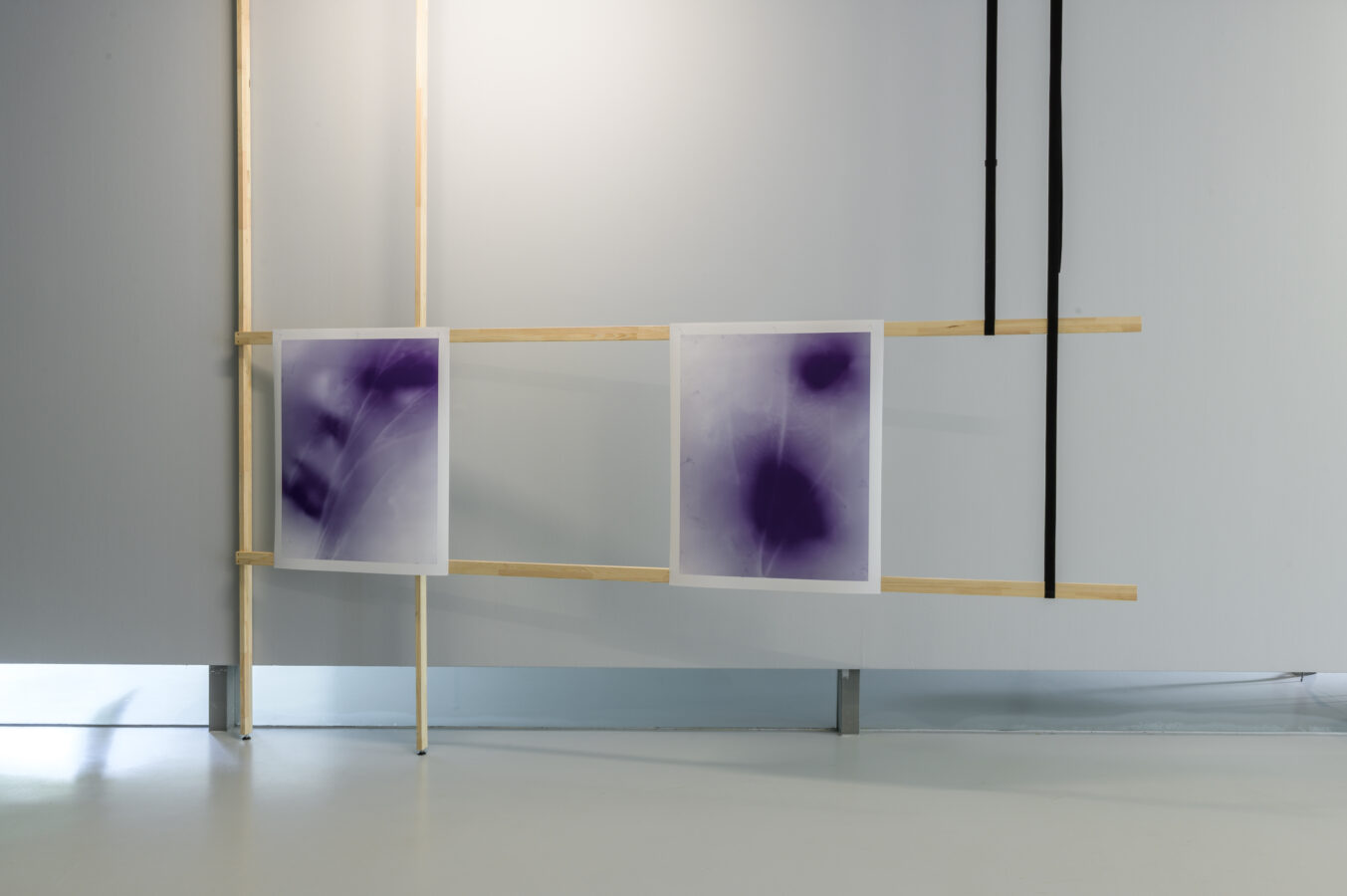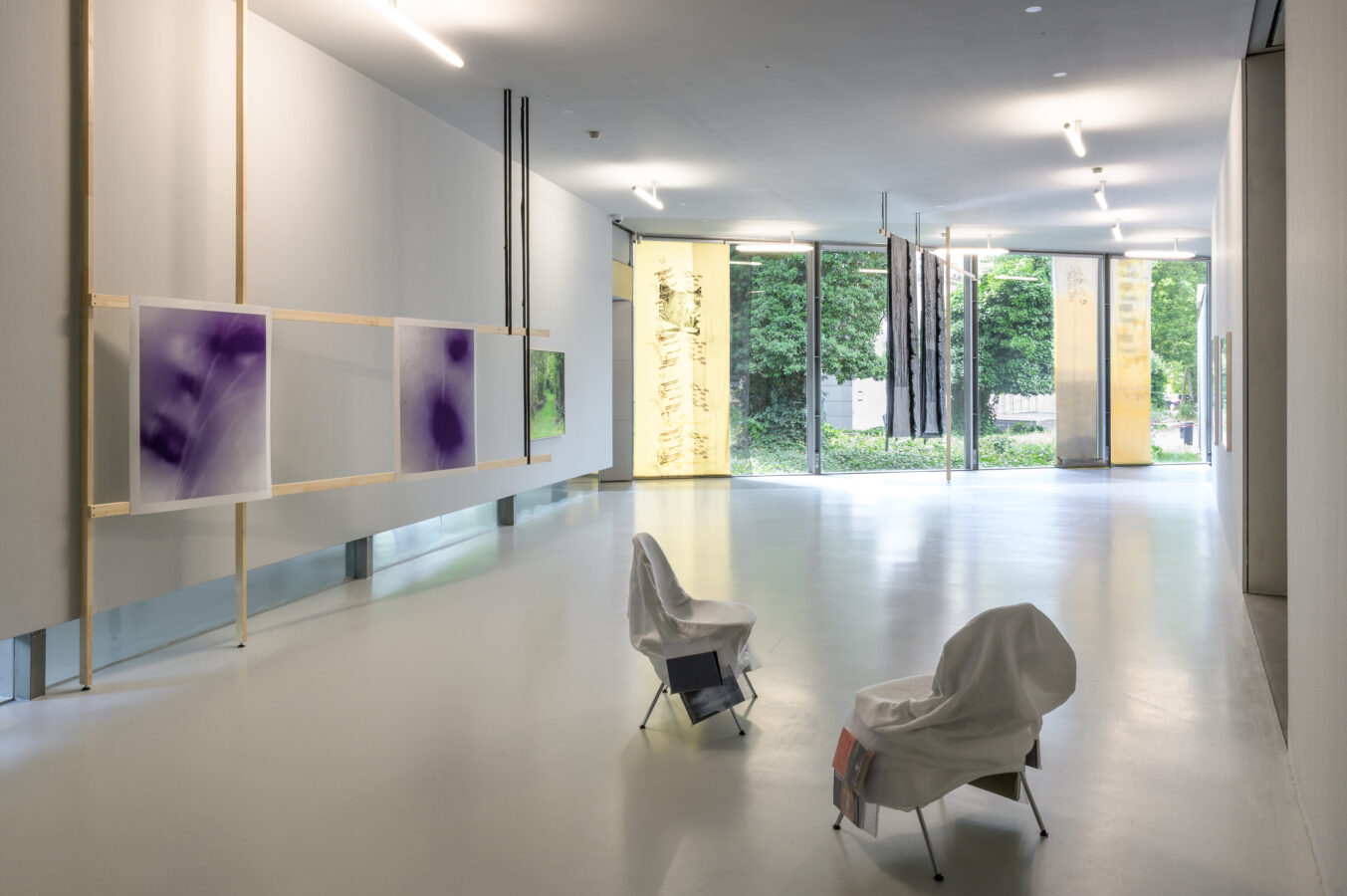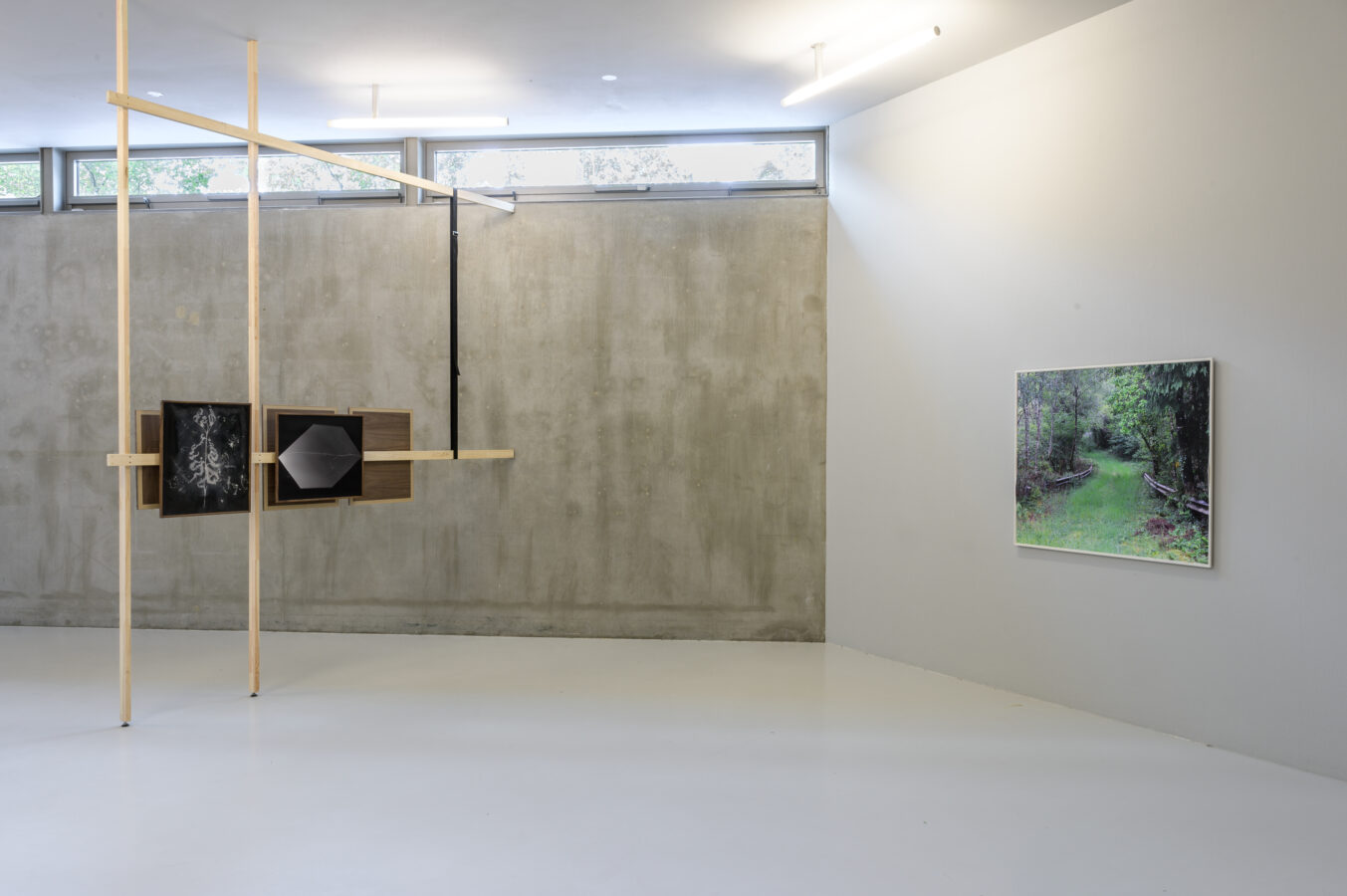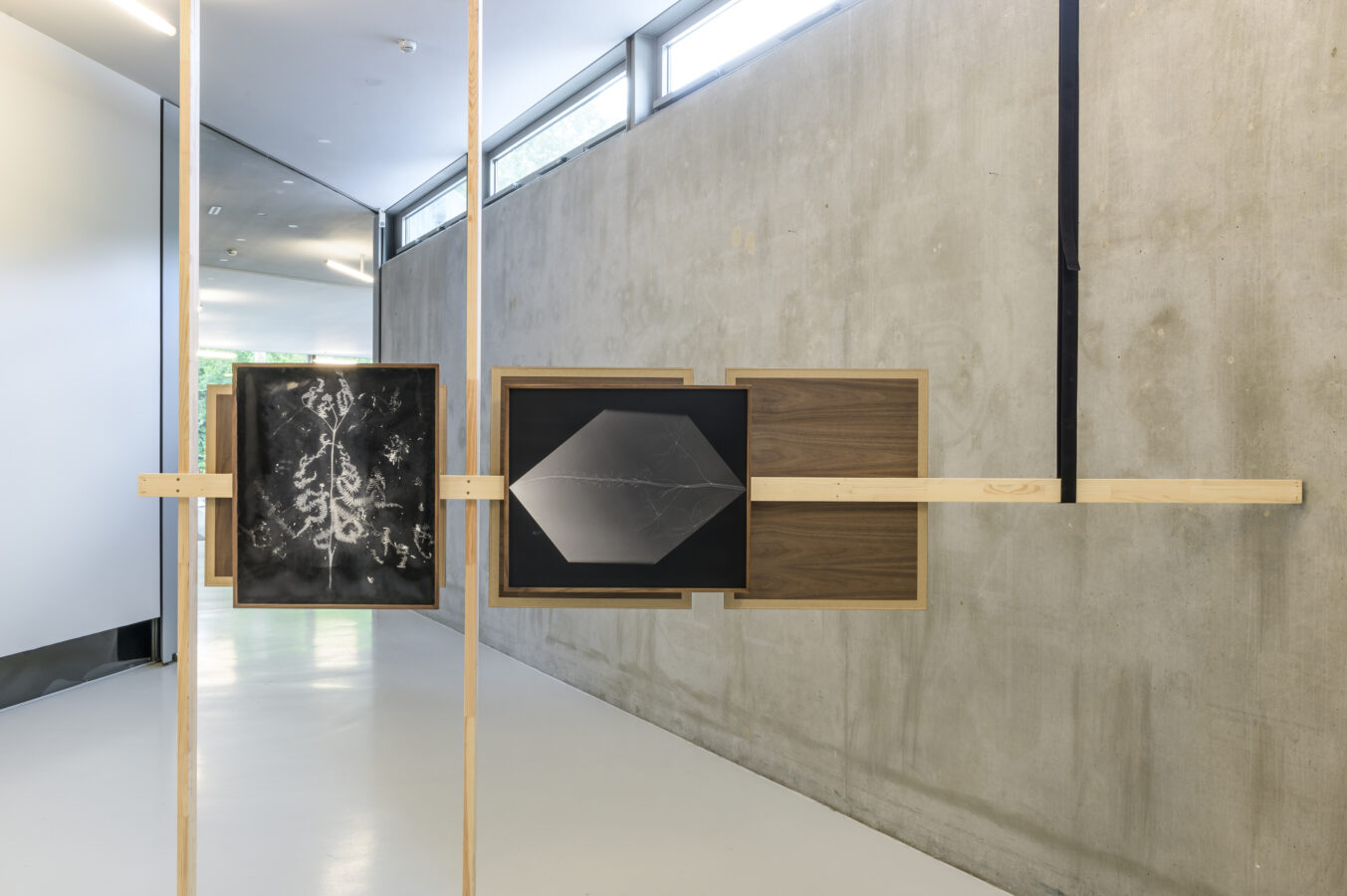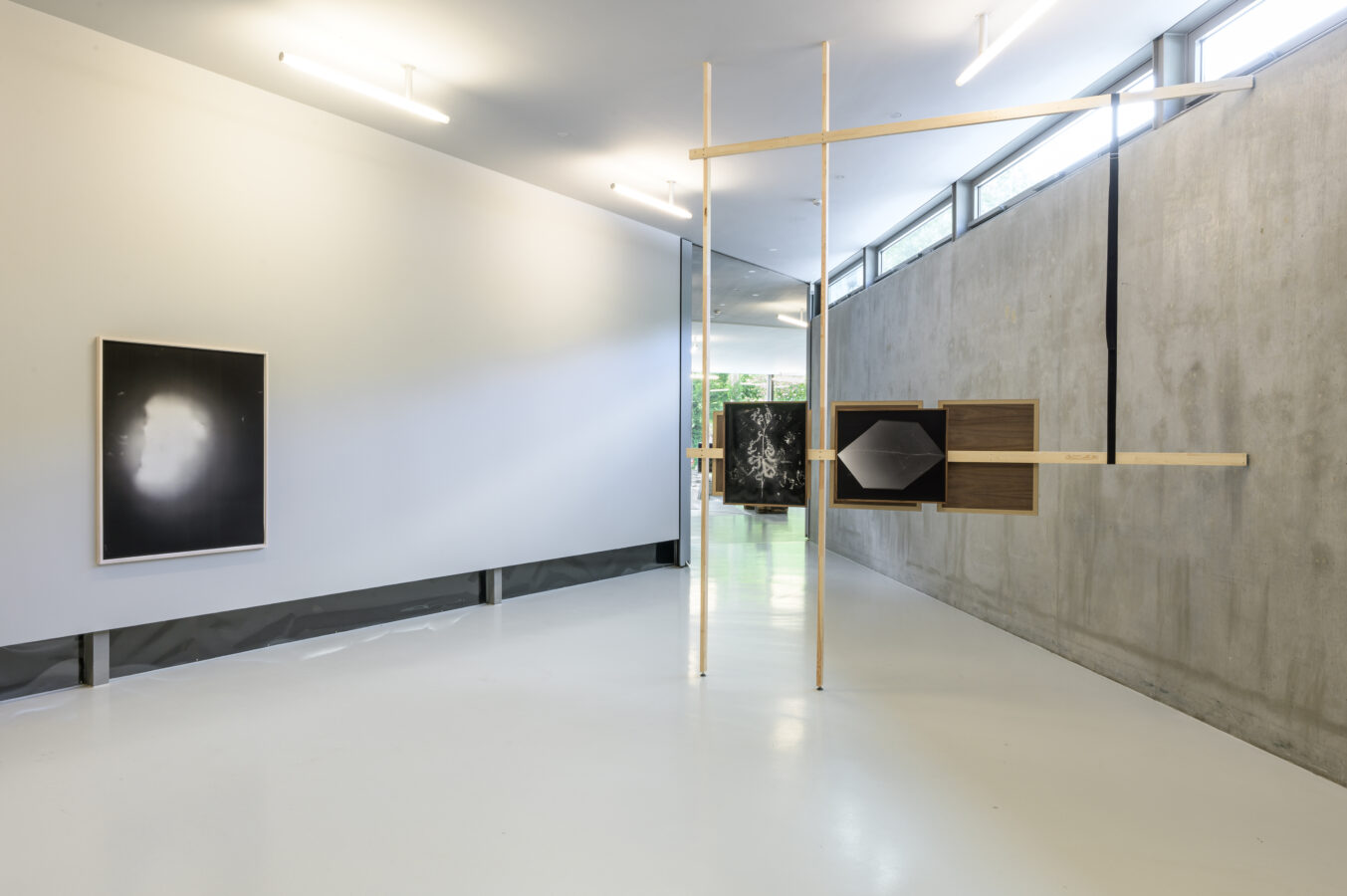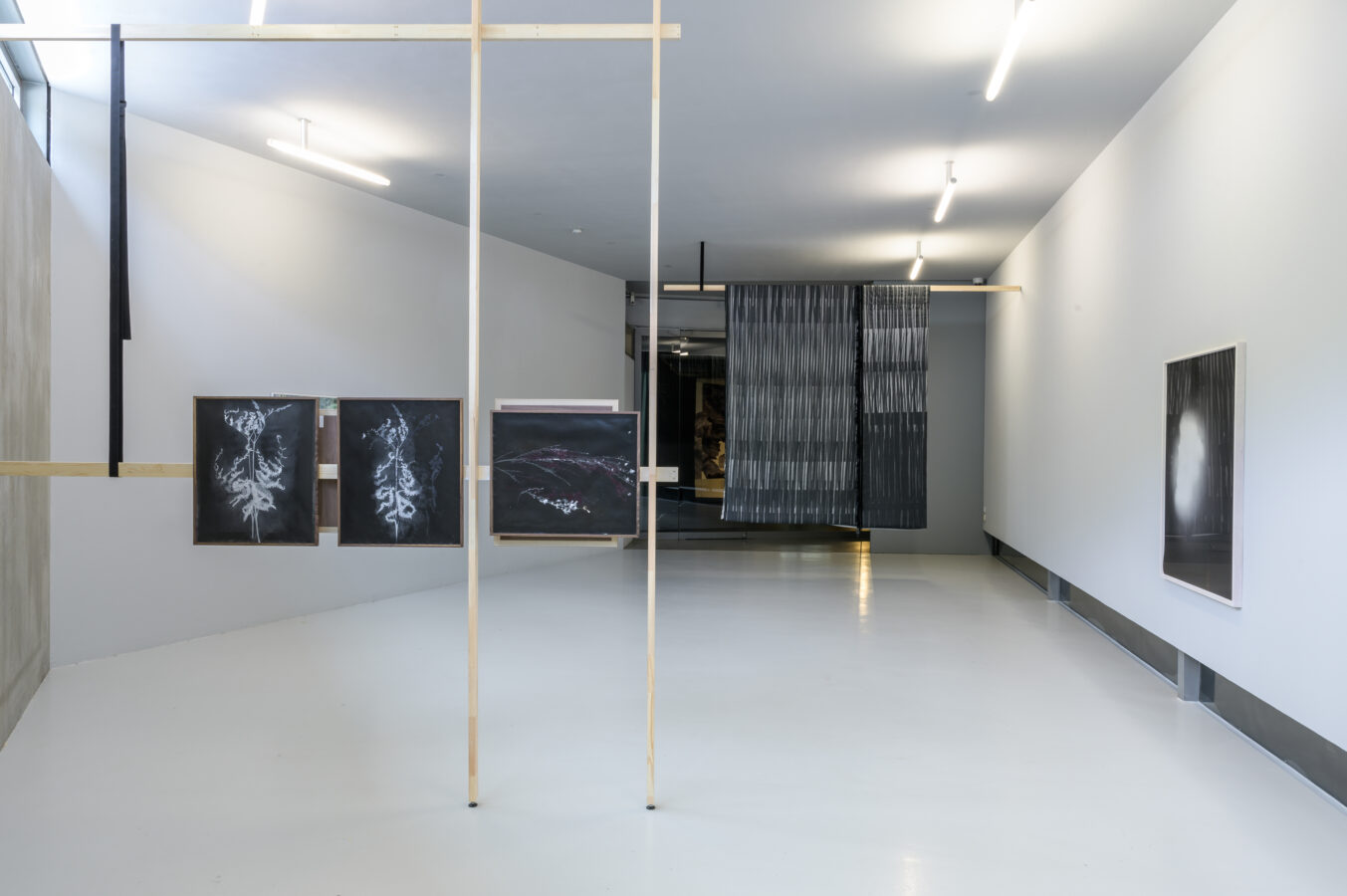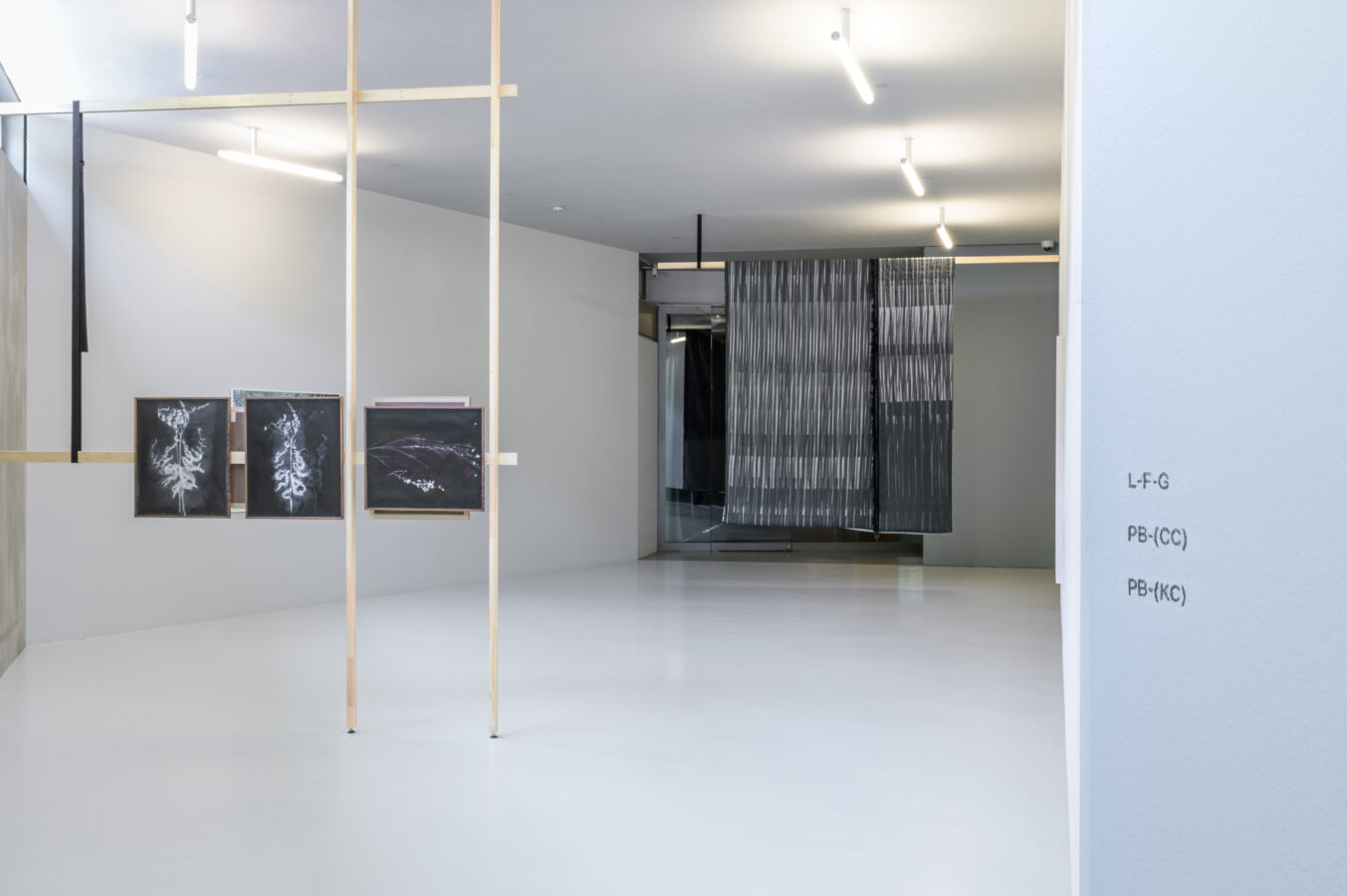“Lupin, fougère, genet” is a newly commissioned work created for the exhibition “L’Age Atomique” at Musée d’Art Moderne de Paris, and a cycle of Pechblende, a long-term artistic research project centred in the uranium-bearing lands of East Germany, more specifically Thuringia and Saxony, regions that supplied the Soviet nuclear program between 1946 and 1991. During expeditions with a team of geologists and miners, the artist studied the accumulation of heavy metals in plants during the re-naturalisation processes, scheduled till 2045.
Concerned with the invisibility of radioactivity and the afterlife of uranium extraction, Kriemann engaged in several cycles related to plants inhabiting these radiating territories.
“Lupin, fougère, genêt” continues the research on uranium mining in the region of Limousin, the cradle of uranium extraction in the Héxagone until 2006.
There samples of contaminated plants and soil were collected. They formed the material for printing photograms by placing them on photographic paper and illuminating them with the flash of a smartphone. These floral imprints evoke an invisibly, but irreversibly nuclearized nature.
Artificially created lakes dot the landscape of the Limousin, as former uranium mines were flooded in the frame of environmental remediation when extractive activities ceased in the 1980s and 1990s. “Lupin, fougère, genêt”, the names of the plants growing close by these watery bodies. The photographic installation approaches the plants as bones-like elements to a landscape deprived its natural skeleton – uranium. Their x-rayed shapes and metal coatings evoke anatomical articulations of nuclear afterlife.
Rather than solely staying with the human protagonists of extractive history, Kriemann brings plants as fierceful actors, destabilising anthropocentric views on Limousin’s nuclear landscape.
“Lupin, fougère, genêt” is made possible thanks to the support of the Goethe-Institut, Paris. The scenography for the installation was conceived by Leia Walz.
Books
Group Exhibitions
...- L'Age Atomique, 2024 Musée d'Art Moderne de Paris Curated by: Julia Garimoth, Maria Stavrinaki, Kyveli Mavrokordopoulou
